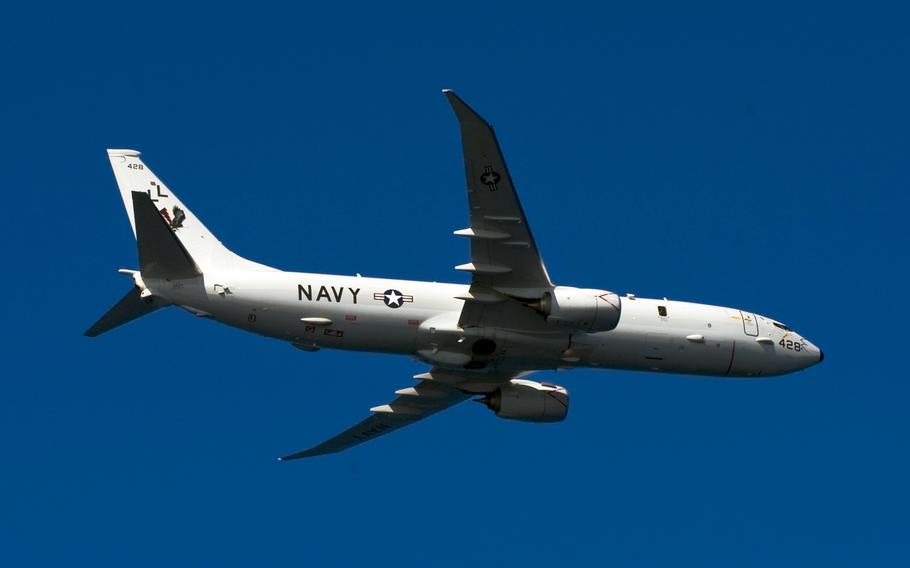
A P-8A Poseidon's primary function is anti-submarine and anti-surface warfare, along with intelligenace and surveillance. (Mike DiMestico/U.S. Navy)
Chinese fighters tracked a U.S. Navy surveillance plane making a flight over the Taiwan Strait on Wednesday, a day after the U.S. defense chief talked for the first time to his Chinese counterpart.
The P-8A Poseidon flew south through the 110-mile-wide channel that separates mainland China from Taiwan, entering from the East China Sea and exiting over the South China Sea, 7th Fleet spokeswoman Lt. j.g. Sarah Merrill told Stars and Stripes by email Wednesday.
“Routine U.S. transits through the Taiwan Strait demonstrate the U.S. commitment to a stable, free and open Indo-Pacific, and confirm that the U.S. Navy flies, sails and operates anywhere international law allows,” she said.
The flight was not tied to any specific event, Merrill added.
Beijing responded by scrambling fighter jets to monitor the Poseidon’s transit, China’s Eastern Theater Command said Wednesday in a post on Weibo.
“Troops in the theater remain on high alert at all times and resolutely safeguard national sovereignty and security, as well as regional peace and stability,” wrote Chinese navy Col. Li Xi.
The Chinese army hailed the Poseidon but “all communications were consistent with international norms and did not impact the operation,” Merrill said.
The flight happened a day after Defense Secretary Lloyd Austin spoke with Chinese National Defense Minister Adm. Dong Jun via video conference.
It was Austin’s first call with a Chinese defense minister since November 2022. It marked a step towards reestablishing military-to-military communications that Beijing ended after then-House Speaker Nancy Pelosi, D-Calif., visited Taiwan in August 2022.
The U.S. routinely sends warships and, less frequently, aircraft, through the strait. The Navy typically describes the transits as a routine means of traveling between the South China Sea and East China Sea.
A Navy Poseidon last flew over the strait on Dec. 7, prompting a similar response from China.
Beijing views Taiwan, a functioning democracy that split from China in 1949, as a breakaway province that must rejoin the mainland, by force if necessary.
Xi, during an April 2 phone call with President Joe Biden, said Taiwan is China’s “first red line not to be crossed” and that Beijing doesn’t tolerate advocacy or support for Taiwanese independence, The Associated Press reported the following day.
Biden emphasized that the United States’ “One China” policy still stands, but added Washington would oppose any coercive attempts at reunification.
Under the “One China” policy, Washington acknowledges Beijing’s view that it has sovereignty over Taiwan but considers the island’s status unsettled.
Xi reiterated China’s stance on Taiwan during an April 10 meeting with former Taiwanese President Ma Ying-jeou in Beijing, according to an AP report two days later.
“The people on both sides of the Taiwan Strait are all Chinese,” he told Ma, according to the report. “There is no dispute that cannot be resolved, there is no problem that cannot be discussed, and no force can separate us.”